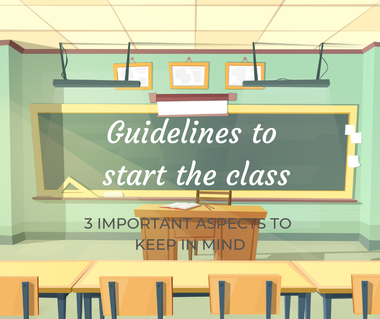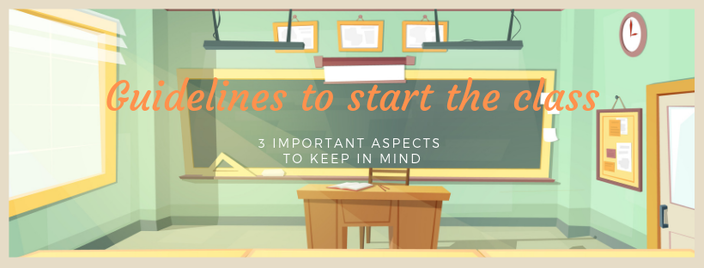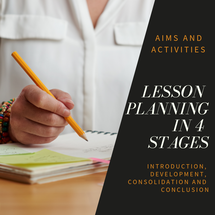Category: Teaching
Do not spend the first part of the class simply taking attendance, checking homework or making announcements. Instead of doing that, set the tone for the class and helps students to know what to expect. For learning to be effective, you should hook the students with creative activities and establish the aims and objectives of the class. There are 3 guidelines to start the class:
1. Set the class purpose
2. Review or assess prior knowledge
A great tool for helping students learn something new is activating what they already know.
Here is a list of techniques to assess prior knowledge:
3. Use a lead-in to capture students’ interest and engage them in learning.
The students are engaged by:
Other ways to grab the student’s attention is by starting the class with:
1. Set the class purpose
- Use the Bloom’s taxonomy to define action verbs.
- Use a single, clear action verb for each learning outcome.
- Avoid verbs that are unclear and cannot be observed easily like “know” and "learn".
- Establish the content or topic to be learned.
- Indicate the kind of performance expected.
2. Review or assess prior knowledge
A great tool for helping students learn something new is activating what they already know.
Here is a list of techniques to assess prior knowledge:
- Brainstorming to generate ideas.
- Eliciting vocabulary and language forms.
- Using concept map or word map.
- Using 3-2-1 charts (3 things you already know, 2 things you’d like to know & 1 question related to the topic).
- Using KWL charts (What I know, what I want to know & what I learned*).
- Answering trivia quizzes and games.
3. Use a lead-in to capture students’ interest and engage them in learning.
The students are engaged by:
- Labeling images.
- Matching or grouping items of information.
- Identifying something.
- Guessing something.
- Sharing personal information with others.
- Doing something non-verbally (Miming, drawing & obeying)
- Describing something.
- Ranking items of information.
- Remembering something and then communicating what he or she has remembered.
- Making a story.
- Writing a poem.
Other ways to grab the student’s attention is by starting the class with:
- Learning games.
- Songs.
- Video clips.
- Role-playing.
- Hangman.
- Puzzles.
- Demonstrations.
What to read next



